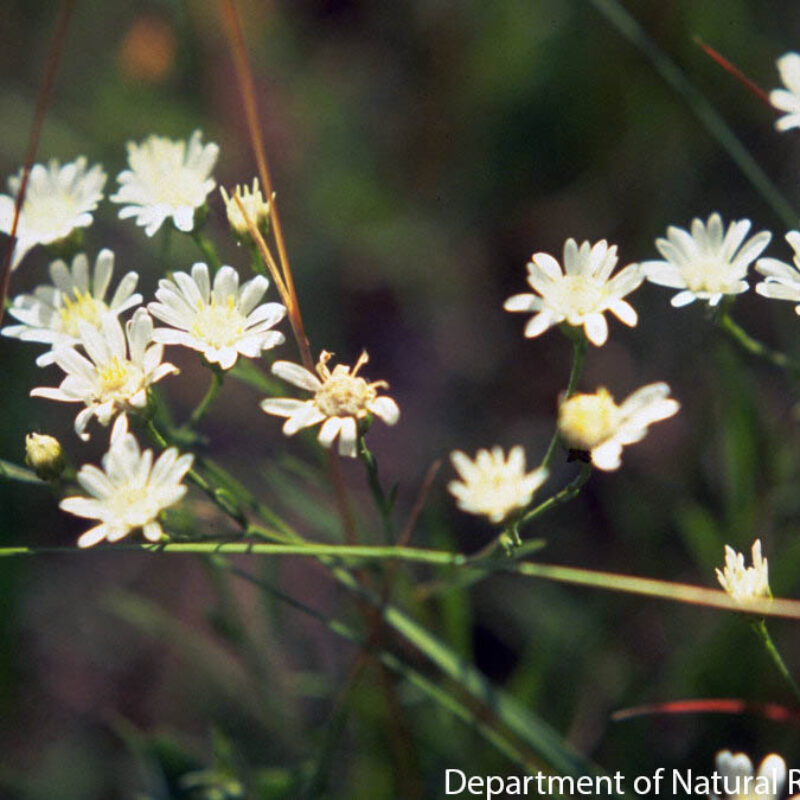White Upland AsterSolidago ptarmicoides
Upland White Aster or Goldenrod prefers dry soils and can be distinguished from other Goldenrod species by its white flowers.
USDA symbol: OLAL2
General Information
| Plant Type | Forb |
|---|---|
| Height | 1 to 2 feet |
| Light Exposure | Sun |
| Soil Moisture | Dry |
| Bloom Color | White |

Tolerances
| Flooding / Inundation Tolerance | Moderate |
|---|---|
| General Resilience | 7 |
| Salt Tolerance | Low |
| Stress Tolerance | Drought Tolerant |
Pollinator Value: High
| Bloom Months | August to September |
|---|---|
| Larval Host of | Bees |
| Specific Pollinators Hosted | Numerous bee species |
| Pollinator Benefit | Insect Pollinated, Provides Nectar, Stem Nesting, Supports Generalists |
Project Planning
| Project Type | Rain Garden, Shoreline Buffer |
|---|---|
| Coefficient of Conservatism | 8 |
| Herbivore Sensitivity | Low |
| Lifespan | Perennial |
| Rate of Spread | Medium |
| Soil Stabilization | Shallow |
| Vegetative Reproduction | Clonal |
Range
| County | Anoka, Becker, Benton, Big Stone, Blue Earth, Brown, Chippewa, Chisago, Clay, Clearwater, Cook, Cottonwood, Crow Wing, Dakota, Douglas, Fillmore, Goodhue, Houston, Hubbard, Kandiyohi, Kittson, Lake, Le Sueur, Lincoln, Lyon, Mahnomen, Marshall, McLeod, Mille Lacs, Morrison, Murray, Norman, Olmsted, Otter Tail, Pennington, Pine, Pipestone, Polk, Pope, Red Lake, Redwood, Renville, Rice, Roseau, Sherburne, St. Louis, Stearns, Stevens, Swift, Todd, Traverse, Wabasha, Wadena, Washington, Wilkin, Winona, Yellow Medicine |
|---|---|
| Ecoregion | Driftless Area, Lake Agassiz Plain, North Central Hardwood Forests, Northern Glaciated Plains, Northern Lakes and Forests, Northern Minnesota Wetlands, Western Cornbelt Plains |
| Approximate Eco Province | Eastern Broadleaf Forest, Laurentian Mixed Forest, Prairie Parkland, Tallgrass Aspen Parklands |
